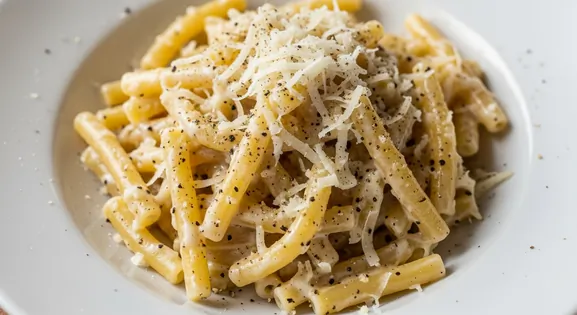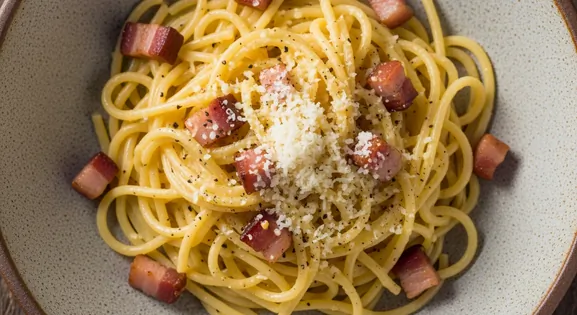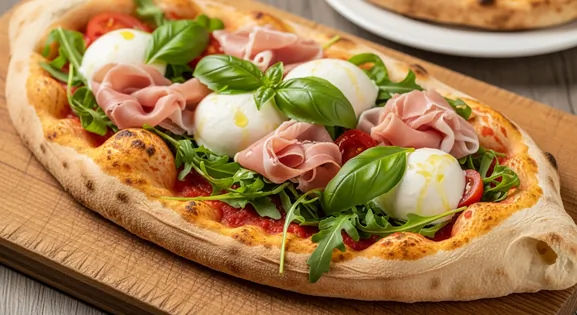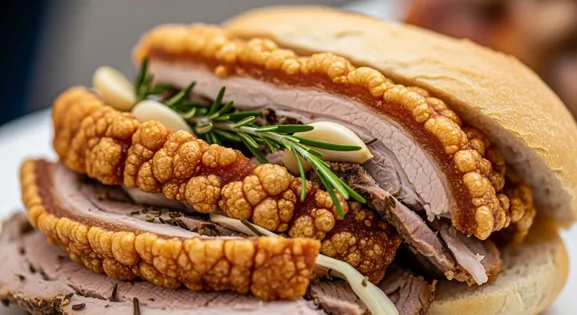
Cacio e Pepe
Cacio e PepeRome's iconic, creamy Pecorino and black pepper pasta, a true local staple.
Step into Rome and let the aroma of freshly baked pizza and simmering pasta sauces guide you through its ancient streets. This city's food is a journey through history, where every bite tells a story of tradition and passion. Prepare to savor the authentic flavors of the Eternal City.
Avoid restaurants displaying "Menu Turistico" signs or picture menus outside. These often indicate overpriced, lower-quality food catering to tourists rather than authentic Roman cuisine.
Roman cuisine is famous for "quinto quarto" (fifth quarter) dishes, using offal. Be adventurous and try local specialties like trippa alla romana or coda alla vaccinara for a true taste of Rome.
Many traditional trattorias offer excellent and inexpensive house wine, often served in carafes. It's a local custom and usually pairs perfectly with Roman dishes.
Home to Rome's former slaughterhouse, Testaccio offers authentic worker's food. Visit Testaccio Market during morning hours for the freshest options.
This charming, bohemian neighborhood is renowned for its traditional Roman trattorias and lively evening atmosphere, offering classic dishes in a picturesque setting.
A historic square known for its vibrant morning market and bustling evening restaurant scene, offering a mix of fresh produce and traditional Roman fare.
This trendy district has high standards but higher prices. Gelato shops with subdued natural colors indicate authentic ingredients.
Roman cuisine centers on 'cucina povera' (poor kitchen) traditions, transforming simple ingredients into extraordinary dishes. The city's food scene spans bustling markets like Campo de' Fiori, traditional trattorias in Trastevere, and contemporary venues in Testaccio, showcasing dishes like carbonara, cacio e pepe, and supplì that define Rome's distinct culinary identity.
How to identify authentic Roman restaurants and avoid tourist traps
Guidelines for selecting the best street food options in Rome
While tap water is generally good, consider bottled water in crowded tourist areas for convenience.
Bright artificial colors often indicate lower quality ingredients. Look for muted, natural hues.
Roman-Jewish style artichokes (carciofi alla giudia) are best enjoyed at established restaurants known for their quality.
Winter dishes in Rome tend to be well-cooked and offer comforting, quality options.
For authentic Roman pasta dishes like carbonara, amatriciana, and cacio e pepe, visit trattorias in Testaccio, Trastevere, or Monti neighborhoods. Avoid restaurants with tourist menus and look for places filled with locals.
Testaccio Market offers authentic street food and local products. Campo de' Fiori is historic but touristy. Mercato Centrale near Termini Station provides a modern food hall experience with quality vendors.
Rome's street food is generally a quality choice, especially traditional items like supplì (fried rice balls), pizza al taglio (slice pizza), and porchetta sandwiches. Choose vendors with high turnover and proper food handling practices.
Romans typically eat dinner between 8:00 PM and 10:30 PM. Restaurants opening earlier (around 7:00 PM) often cater to tourists. For an authentic experience with better service, dine after 8:30 PM with the locals.
Rome's iconic, creamy Pecorino and black pepper pasta, a true local staple.
Rome's iconic pasta, rich with guanciale, Pecorino, and perfectly emulsified egg.
Rome's lighter, oval-shaped flatbread with an airy, crispy crust.
Rome's crispy-skin roast pork, a beloved street food staple.
At Tasteplorers, our mission is to provide the most accurate and useful travel information in the world. To achieve this, all content on this site is created through our unique editorial framework. We utilize leading AI research tools, guided by our proprietary prompts, and a multi-stage validation process. This entire system is overseen by our editorial team to ensure everything we publish meets our high standards for accuracy, cultural nuance, and practical value for travelers.
Learn more about our Editorial Process and our Mission.
Discover Florence's best food areas including Mercato Centrale, Sant'Ambrogio Market & Santo Spirito. Expert quality-focused choices, authentic trattorias & must-try Tuscan specialties.
Discover Naples' best street food areas including Spaccanapoli, Quartieri Spagnoli & Porta Nolana Market. Expert pizza tips, local specialties & must-try authentic dishes.
Navigate Italy's diverse culinary landscape with our expert guide. Discover authentic Italian cuisine from Rome's street food to regional specialties, making informed choices for a great travel experience.
Navigate Spain's vibrant food scene with our expert guide. Discover authentic Spanish cuisine from Barcelona's tapas bars to regional specialties with quality-focused choices.
Discover Europe's diverse culinary landscape, from Mediterranean flavors to hearty Alpine fare. Learn to navigate markets, decode menus, and eat like a local.
Discover the vibrant cuisines of Latin America & the Caribbean. Our expert guide covers everything from Mexican street food to Peruvian ceviche and market tips.
Explore Oceania's diverse food scene. Learn about Polynesian earth ovens, Fijian feasts, and the vibrant café culture of Australia and New Zealand.
Explore Southeast Asia's diverse food cultures from Thailand to Vietnam. Get expert tips on navigating spice levels, choosing quality vendors, and understanding the rich traditions of the region.


